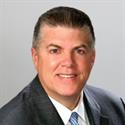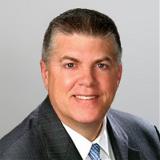For Retired Individuals and Those Nearing Retirement
Required Minimum Distribution (RMD) starting age pushed back
The RMD age has been pushed back to age 73 effective January 1, 2023. In 2033, the RMD age will be increased once again, to age 75. If you turned 72 in 2022 or earlier, you will need to continue taking your RMDs as currently scheduled.
If you turn 72 in 2023 and have already scheduled your withdrawal, you may want to reconsider and push it back a year. A later RMD age allows investors with IRAs or retirement plan accounts to delay taking distributions if they don’t need the funds. Given the additional delay in RMD age, you may want to examine the potential benefits of a Roth conversion strategy, especially if a conversion does not push you into a much higher tax bracket.
Catch-up contribution limits increased
Starting January 1, 2025, individuals ages 60 through 63 years old will be able to make catch-up contributions up to $10,000 annually (amount will be indexed for inflation) to a workplace plan like a 401(k). Another provision starting in 2024 states that if you earned more than $145,000 in the prior calendar year, all the catch-up contributions at age 50 or older will now need to be made to a Roth account in after-tax dollars versus the current traditional deferral method.
Currently, IRAs have a $1,000 catch-up contribution limit for people aged 50 and over. Starting January 1, 2024, that limit will be indexed to inflation as well, which means the contribution limit could increase annually. This extra money can help compensate for any gaps in saving earlier or help build an even more substantial nest egg.
Qualified Charitable Distributions (QCD)
Beginning January 1, 2023, those who are 70½ and older may elect to make a one-time gift of up to $50,000 funded solely from their QCD, to a charitable remainder trust (CRT) or charitable gift annuity. This amount will be adjusted annually for inflation, but may only be used once during one's lifetime.
This provides a limited expansion of charitable distributions that can be made as QCDs. The amount will count toward your RMD, if required. Since $50,000 is a small amount to place in a CRT, consider comparing charitable organizations who offer charitable gift annuities programs. Both allow an annual payment which can be received for the donor’s lifetime. The $100,000 annual limit for QCDs will also be indexed for inflation.
For Younger Individuals and Those Recently Employed
Auto enrollment
SECURE Act 2.0 will require automatic enrollment for new 401(k) and 403(b) plans established after December 31, 2024, starting at a 3% contribution level. That rate would increase by 1% per year until it reaches at least 10%. While the employee will still have the option of opting out, the auto enrollment feature may help a number of workers start saving earlier without having to take action.
Matching contributions extended for student loan payments
Employers will be able to treat student loan payments as retirement contributions for the purpose of qualifying for matching contributions in retirement accounts, giving younger employees the ability to save for retirement while paying off their student loans. Effective beginning in 2024, the match isn’t required, though employers may want to implement it as a competitive advantage in hiring and retaining employees.
Something for Everyone
Roth account rules expanded
Effective in 2023, employers will be able to provide employees the option of receiving vested matching contributions to Roth accounts. Also starting in 2023, Roth contributions may also be made to Simple IRAs and employers can also offer employees the ability to treat employer SEP contributions as Roth contributions. Please note, it may take time for plan administrators to revise systems to account for these changes in their payroll systems before these provisions may be implemented.
In addition, Roth accounts in employer plans will no longer be subject to RMD rules during the life of the participant. This now puts Roth employer plans on the same RMD footing as Roth IRAs.
529 plan conversions
A provision that benefits younger participants but relates to planning for the older generation is a change in the distribution rules of 529 education savings plans. This change will allow investors to convert excess funds from a 529 plan that has been open for at least 15 years to a Roth IRA for the named beneficiary.
If you have an unused balance in a current 529 plan, you should consider if the assets would serve the beneficiary better in a 529 or a Roth IRA. If you have young children, you should consider planning to fully fund a 529 plan for their benefit. Please note that this provision is subject to various rules in addition to the 15-year requirement, such as being subject to the regular annual IRA contribution limit, and a $35,000 lifetime maximum.
Penalty-free early withdrawals
Participants may have access to limited emergency funds for expenses which are unforeseeable or for immediate financial needs. The penalty-free withdrawals, effective December 31, 2023, are limited to one per year of up to $1,000, and the taxpayer has three years in which to repay the distribution. No further emergency distributions are allowed during the repayment period unless repaid in full.
The new legislation also set out permanent rules for using retirement funds in the event of a federally declared disaster occurring on or after January 26, 2021. The rules allow participants to withdraw up to $22,000 from employee plans or IRAs. These withdrawals are not subject to the 10% early withdrawal penalty and can be taken into gross income over a three-year period. These distributions can also be repaid to a tax-preferred retirement account.
SECURE Act 2.0 created a new penalty-free early withdrawal for the lesser of $10,000 or 50% of the participant’s account if a participant experienced domestic abuse. This section of the Act allows the participant to self-certify the abuse. The participant will have the opportunity to repay the withdrawn funds over three years, and if done, the participant will be refunded for income taxes on the money that was repaid. This section is also effective after December 31, 2023.
Finally, SECURE Act 2.0 provides a penalty exception for distributions made to a terminally ill individual. This provision will be effective for distributions made after the date of enactment.
To take full advantage of this new law, and for further guidance, be sure to speak with your Financial Advisor.
Working With Janney
Depending on your financial needs and personal preferences, you may opt to engage in a brokerage relationship, an advisory relationship or a combination of both. Each time you open an account, we will make recommendations on which type of relationship is in your best interest based on the information you provide when you complete or update your client profile.
When you engage in an advisory relationship, you will pay an asset-based fee which encompasses, among other things, a defined investment strategy, ongoing monitoring, and performance reporting. Your Financial Advisor will serve in a fiduciary capacity for your advisory accounts.
For more information about Janney, please see Janney’s Relationship Summary (Form CRS) on www.janney.com/crs which details all material facts about the scope and terms of our relationship with you and any potential conflicts of interest.
By establishing a relationship with us, we can build a tailored financial plan and make recommendations about solutions that are aligned with your best interest and unique needs, goals, and preferences.
Contact us today to discuss how we can put a plan in place designed to help you reach your financial goals.
About the author

Related Articles
-
Tax Planning
3 Tax-Planning Considerations Ahead of Next Year's TCJA Sunset
The Tax Cuts and Jobs Act of 2017 is scheduled to sunset at the end of 2025, meaning significant ... -
Insurance & Annuities
Reposition Assets for Tax-Efficient Wealth Transfer
If you’re close to or in retirement and asking yourself how you can best pass your wealth on to y... -
Education Planning
Tips for Leveraging 529 Education Savings Plans
You’re proud of the children in your life. And understandably, you may want to reward them with o...




